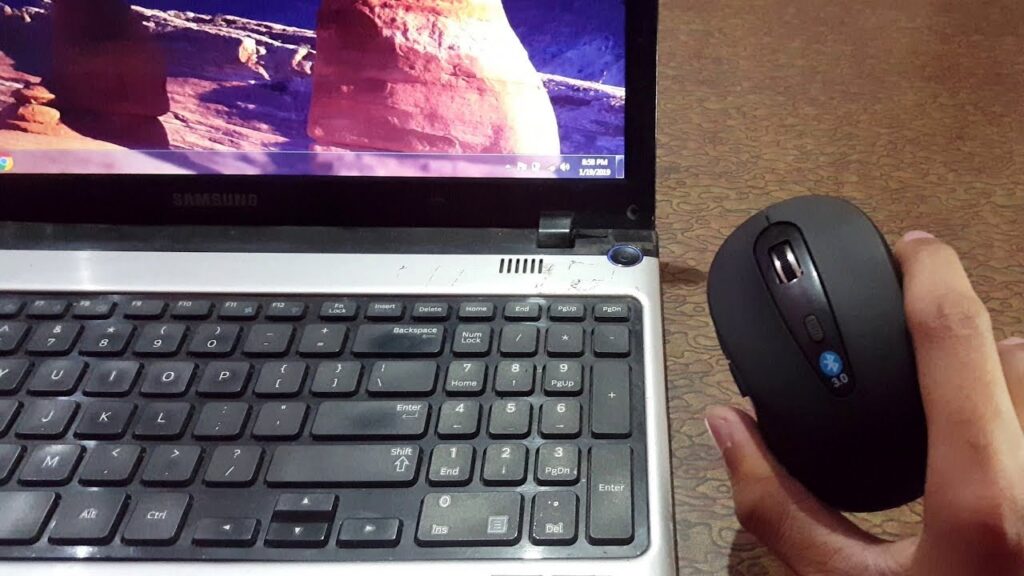Complete guide For How To Add Mouse To Laptop in 2025
Today’s laptops, known for being lightweight and ergonomic, are great for typing and browsing, but many users still prefer the comfort of a handheld optical mouse for smoother navigation. Whether you’re working on image-editing software, creating a diagram, or adding details to a project in Paint, having precise movements with your cursor can make a big difference. Personally, I find that a wireless or USB mouse becomes my primary tool for tasks that require detailed work, as it easily outperforms the built-in touchpad.
Enabling an optical mouse is straightforward. Using a wireless model? Simply connect the USB receiver, and you’re ready. For a standard USB mouse, plug it into your laptop’s port, and it will usually enable automatically. Many modern laptops allow these devices to work without additional setup. If the built-in system doesn’t detect the mouse, check your settings to ensure it’s recognized as the primary navigational tool. Switching to a mouse for tasks like drawing, browsing, or everyday movements is an easy way to improve both efficiency and comfort.
Enabling a USB Mouse
- Verify the USB mouse you are thinking of purchasing is compatible with your laptop model.
- Browse the manufacturer’s website or read the packaging to ensure it will function properly with your computer.
- Plug the mouse’s cable into the matching port on the side of your laptop.
- Restart the system while the mouse remains connected.
- Once the system has rebooted, the New Hardware Wizard will run and install the necessary driver for proper functioning.
- Move the mouse a few times to confirm the cursor responds.
- You can now use your optical mouse alongside your computer’s touchpad for navigation
Enabling a Wireless Mouse
Before you start, check the compatibility of the wireless mouse with your computer, especially if you are planning a new purchase. Install the required batteries—usually AA batteries—by lifting the top panel of the mouse to expose the battery compartment. These batteries typically provide enough power to keep the mouse functioning efficiently.
Next, connect the USB receiver, which is often bundled with the mouse, into a port on the side of your computer. Press and hold the small button on the underside of the mouse, along with the button on the receiver, until the tracking light underneath illuminates. Once the light is on, turn the mouse over and start moving it to ensure that the cursor tracks properly. This simple setup ensures smooth operation of your wireless mouse.
Conclusion
Connecting a wireless mouse to your laptop, whether through Bluetooth or a USB receiver, is a straightforward process that can significantly improve your computing experience. By following simple steps and utilizing helpful tips provided, you can ensure a quick and hassle-free setup. Devices like the HONOR MagicBook 15, which are designed for seamless peripheral connectivity, make this integration even more efficient.
With an effortless setup, the process of connecting your mouse becomes a smooth part of your daily routine, enhancing productivity and comfort. Whether you’re using it for work or personal use, a wireless mouse seamlessly integrates into your workflow and makes multitasking easier. The added peripheral functionality not only boosts your productivity but also offers a more comfortable and ergonomic way to navigate your system.
FAQ
Why won’t my laptop find my mouse?
If your laptop can’t find your mouse, first ensure the mouse’s batteries are charged and that it is powered on. For Bluetooth mice, confirm that the mouse is in pairing mode and your laptop’s Bluetooth is enabled. Additionally, check that the mouse is compatible with your laptop and that any necessary drivers are installed.
How do I get my computer to recognize a new wireless mouse?
To connect a new wireless mouse, start by inserting the USB receiver into a functional USB port on your computer. If it’s a Bluetooth mouse, navigate to your computer’s settings and enable Bluetooth. Look for the device in the pairing list and follow the on-screen instructions to complete the connection. Ensure the mouse has charged batteries or power.
Why is my Bluetooth mouse not pairing?
A Bluetooth mouse may fail to pair due to several reasons:
- The mouse isn’t in pairing mode.
- Your computer’s Bluetooth might be disabled or malfunctioning.
- Low batteries in the mouse.
- Interference from other nearby wireless devices.
To resolve the issue, double-check your mouse’s pairing instructions, ensure your laptop’s Bluetooth is active, and replace the mouse’s batteries if necessary. If the problem persists, restart both the mouse and your computer, and try pairing again.
Let me know if you’d like to add more questions or need edits!

